Sample Meal Plan on Semaglutide: Why Everything You’ve Been Told About Timing Your Meals Is Wrong
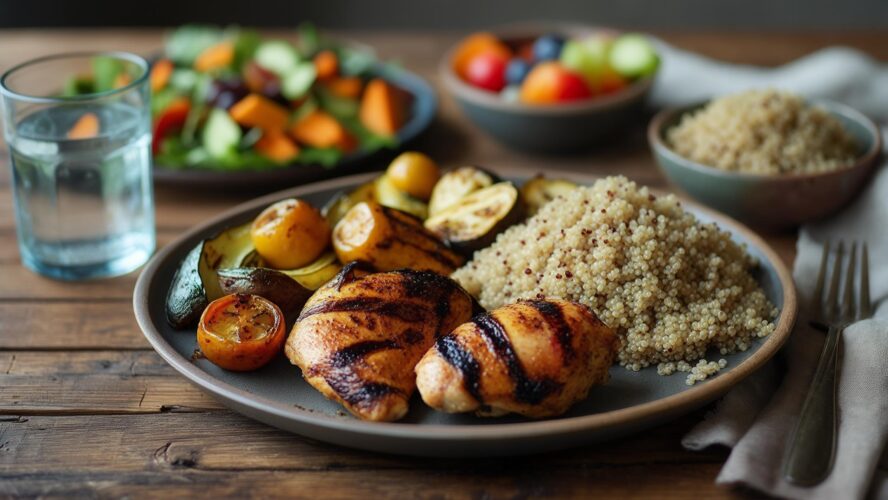
Three months into taking semaglutide, I found myself staring at a sandwich I’d made for lunch, feeling absolutely zero desire to eat it. Sound familiar? If you’re on this medication, you’ve probably had that exact moment – and wondered what the heck you’re supposed to do about it.
Here’s what nobody told me: when you’re on semaglutide, your body operates on a completely different schedule that most meal plans totally ignore. Research shows that people on semaglutide typically eat 60-70% less food than before starting the medication, which means every single bite has to count. But this isn’t just about eating less – it’s about learning to work with your body’s new rhythm instead of fighting against it like I did for weeks.
I spent months figuring out what actually works when your appetite disappears and traditional meal planning becomes completely useless. Can we talk about how weird it is to not be hungry? Like, at all? I used to plan my whole day around meals, and suddenly food became this thing I had to remember to do, like taking vitamins.

Table of Contents
- Why Your Hunger Feels So Different Now
- Figure Out Your New Hunger Signals
- Building Meals That Actually Work With Your New Appetite
- Supplements That Actually Help
- Final Thoughts
TL;DR
- Your hunger signals went from “roaring” to “whispering” – you need to learn this new language to avoid feeling like garbage
- This medication works best during specific hours (10 AM – 2 PM), so timing your biggest meal here actually makes everything easier
- Your digestion is way slower now, so you need foods with natural enzymes and a specific eating order (liquids first, then solids) to prevent that awful “food brick” feeling
- Every bite must count nutritionally since you’re eating 60-70% less – no more filler foods
- You’ll probably need B vitamins, magnesium, and digestive enzymes because you’re eating so much less and absorbing differently
- When you can’t eat your feelings anymore, you actually have to… feel them (this was uncomfortable but also kind of liberating)
Why Your Hunger Feels So Different Now
Forget everything you know about regular meal planning. Here’s something nobody told me – this medication hits differently throughout the day. At 7 AM, it’s barely doing anything. By noon? It’s working overtime. Understanding these natural rhythms means the difference between feeling energized and struggling with constant fatigue or nausea.
I’ll be real with you – there were days I forgot to eat entirely and then wondered why I felt like garbage by 3 PM. Or times I forced myself to eat because I thought I “should,” only to feel nauseous for hours. Your meal plan needs to work with these new patterns, or you’ll spend your days fighting against your own body like I did.
Understanding your body’s changes is crucial, especially when timing your meals becomes more important than ever for maintaining steady energy throughout the day.
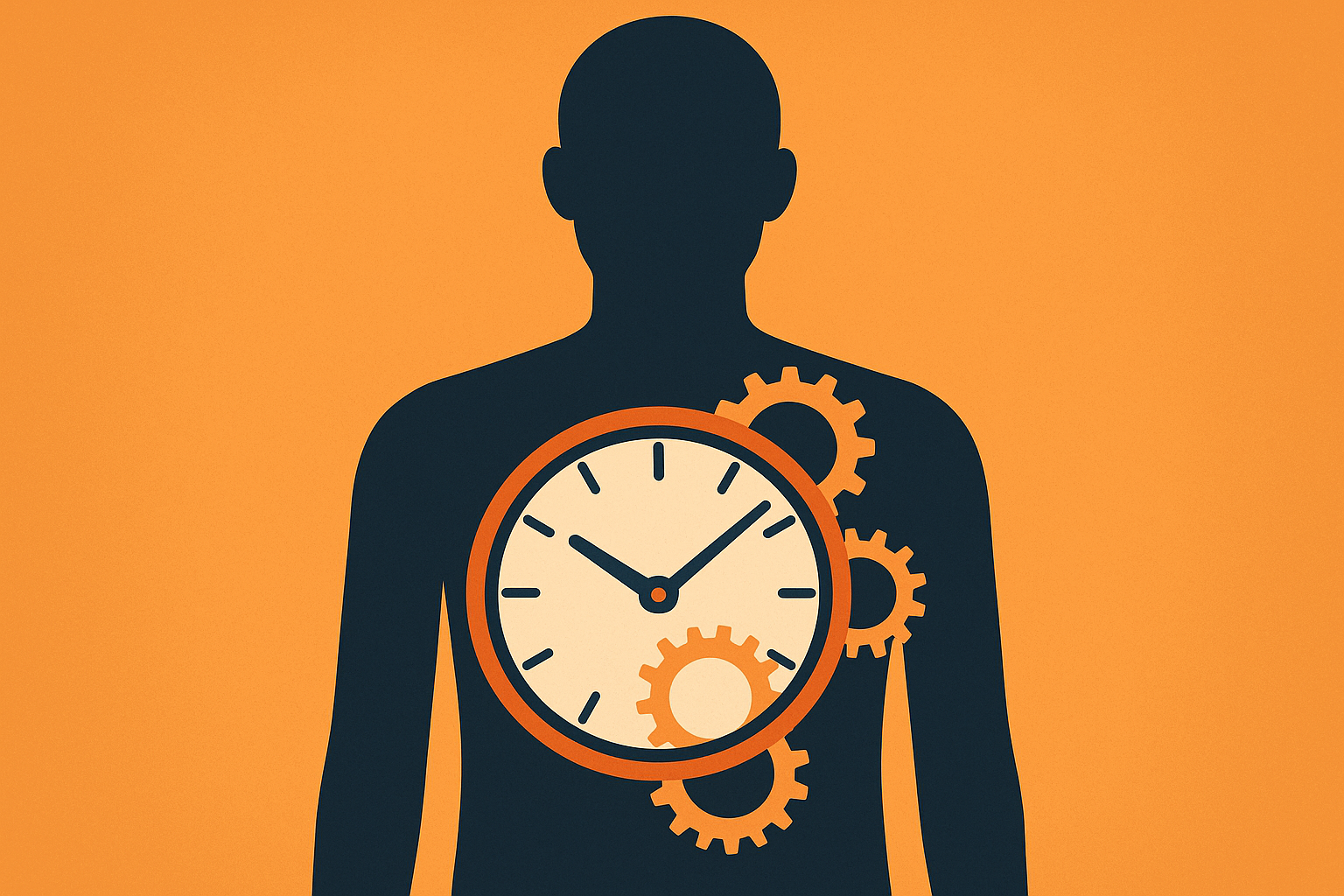
When Your Medication Actually Works Best
Here’s what I figured out about when semaglutide actually works throughout the day (and when it doesn’t). The recommended dosage stages for semaglutide start at 0.25 mg for four weeks, then increase to 0.5 mg for four weeks, 1.0 mg for four weeks, 1.7 mg for four weeks, with 2.4 mg as the final maintenance dose. Each dose level creates slightly different patterns, but these core windows stay pretty consistent.
| Time Window | What’s Actually Happening | What I Do | Why It Works |
|---|---|---|---|
| 4-6 AM | Body’s waking up, cortisol spiking | Just electrolyte water | Prevents that 3 PM crash |
| 10 AM – 2 PM | Medication working hardest | Biggest meal of the day | Can actually enjoy eating |
| 6-8 PM | Effects starting to fade | Light, easy stuff only | Won’t regret it later |
| 9 PM+ | Medication barely working | Nothing (seriously, don’t) | Trust me on this one |
Early Morning Reality Check (4-6 AM)
Before you even think about food, your body’s stress hormones can mess with your blood sugar control even when you’re on semaglutide. I used to reach for coffee immediately, but now I start with water mixed with a pinch of sea salt and lemon. This simple step keeps everything working smoothly and prevents that shaky feeling I used to get mid-afternoon.
Sarah, a teacher I know, used to crash every day at 2 PM despite her medication. After switching to electrolyte water first thing (16 oz water + 1/4 tsp sea salt + juice of half a lemon), her energy stayed steady through her whole teaching day. She noticed the difference in just three days.
Your Sweet Spot (10 AM – 2 PM)
This four-hour window is when the appetite suppression hits its peak. Most people make the mistake of forcing breakfast when they’re not hungry, then struggling to eat anything substantial later. I learned to wait until my body’s actually ready for food (usually around 10 AM), then make that meal count.
During this window, your stomach can handle more volume and actually wants to digest food. It’s the perfect time for that protein-packed meal you’ve been trying to fit in somewhere. This is when I can actually enjoy eating without feeling forced or sick.
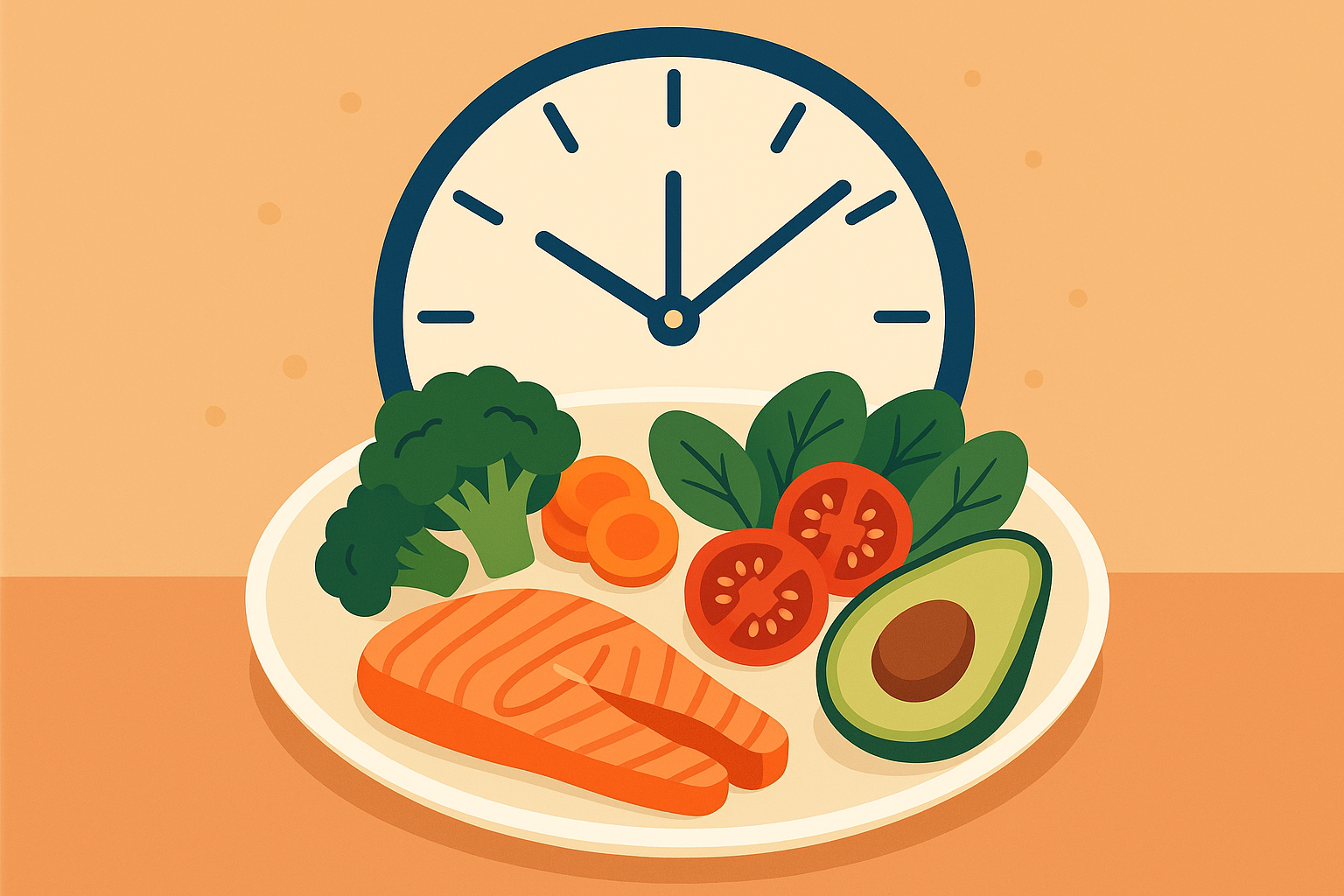
Evening Wind-Down (6-8 PM)
As the medication’s effects fade in the evening, your body starts transitioning. Light, easily digestible meals during this period prevent late-night cravings while supporting overnight repair without overwhelming your still-sensitive digestive system.
Evening meals need to be gentle because your digestion is still slower than normal, but you also don’t want to go to bed undernourished. I focus on easily digestible proteins – bone broth with collagen or a small portion of fish with steamed vegetables.
Dealing with Super Slow Digestion
Semaglutide significantly slows how quickly food moves through your stomach. This sounds great for appetite control, but it can create that uncomfortable “food brick” sensation if you don’t adjust what and how you eat.
Pro tip I learned the hard way: Don’t try to eat a big salad when your digestion is this slow. I spent an entire afternoon feeling like I had a bowling ball in my stomach. Rookie mistake.
The digestive challenges are similar to other gut issues, and these proven strategies for beating bloat and improving digestion can provide additional relief when combined with medication-specific approaches.
Foods That Actually Digest Together
I learned this the hard way after several miserable experiences with food just sitting in my stomach for hours. Now I always include something with natural enzymes in my meals – a few pineapple chunks with my chicken, or some sauerkraut with my eggs. The difference is remarkable.
Natural Enzyme-Rich Foods That Actually Help:
- ☐ Pineapple (breaks down protein)
- ☐ Papaya (super gentle on your stomach)
- ☐ Fermented vegetables (sauerkraut, kimchi)
- ☐ Fresh ginger (helps with nausea too)
- ☐ Mango (helps with starches)
- ☐ Kiwi (really good with protein)
Include at least one of these with each meal to avoid that awful stuck feeling.
The Order That Actually Works
I start with warming up my digestive system. A few sips of warm bone broth, then move to softer foods, and finish with anything that requires more chewing. This prevents that sudden wall of fullness that can make you feel sick.
Think of it like stretching before a workout – you’re preparing your system for what’s coming.

Making Every Bite Actually Matter
With your food capacity reduced by 60-70%, every single bite must deliver real nutritional value. This requires completely rethinking portion sizes and food choices, focusing on what your body actually needs rather than just filling up.
Strategic Food Pairing
Instead of thinking about individual foods, I plan meals where each component enhances the others. Vitamin C-rich bell peppers with iron-rich spinach, healthy fats with fat-soluble vitamins, or zinc-rich pumpkin seeds with magnesium-rich dark chocolate (yes, you can still have chocolate!).
Mike’s go-to meal combines spinach (iron) + red bell pepper (vitamin C for iron absorption) + avocado (healthy fats) + pumpkin seeds (zinc and magnesium) + grilled salmon (omega-3s and protein). This single meal delivers complete nutrition in just 1.5 cups of food, perfect for his reduced appetite.
Your meal planning needs this level of strategy to ensure you’re getting complete nutrition from dramatically smaller portions.
Figure Out Your New Hunger Signals
Rather than fighting against the dramatic appetite changes, I learned to map my unique hunger patterns to create an eating rhythm that feels natural and sustainable long-term. This approach treats your changing relationship with food as valuable information rather than something to overcome.
Recent developments show that “elimination diets have gained tremendous popularity, with experts noting that those taking weight loss drugs like semaglutides may benefit from an elimination approach, but planning from an expert is absolutely necessary” according to Woman’s World. This highlights why your meal plan needs to be highly individualized.
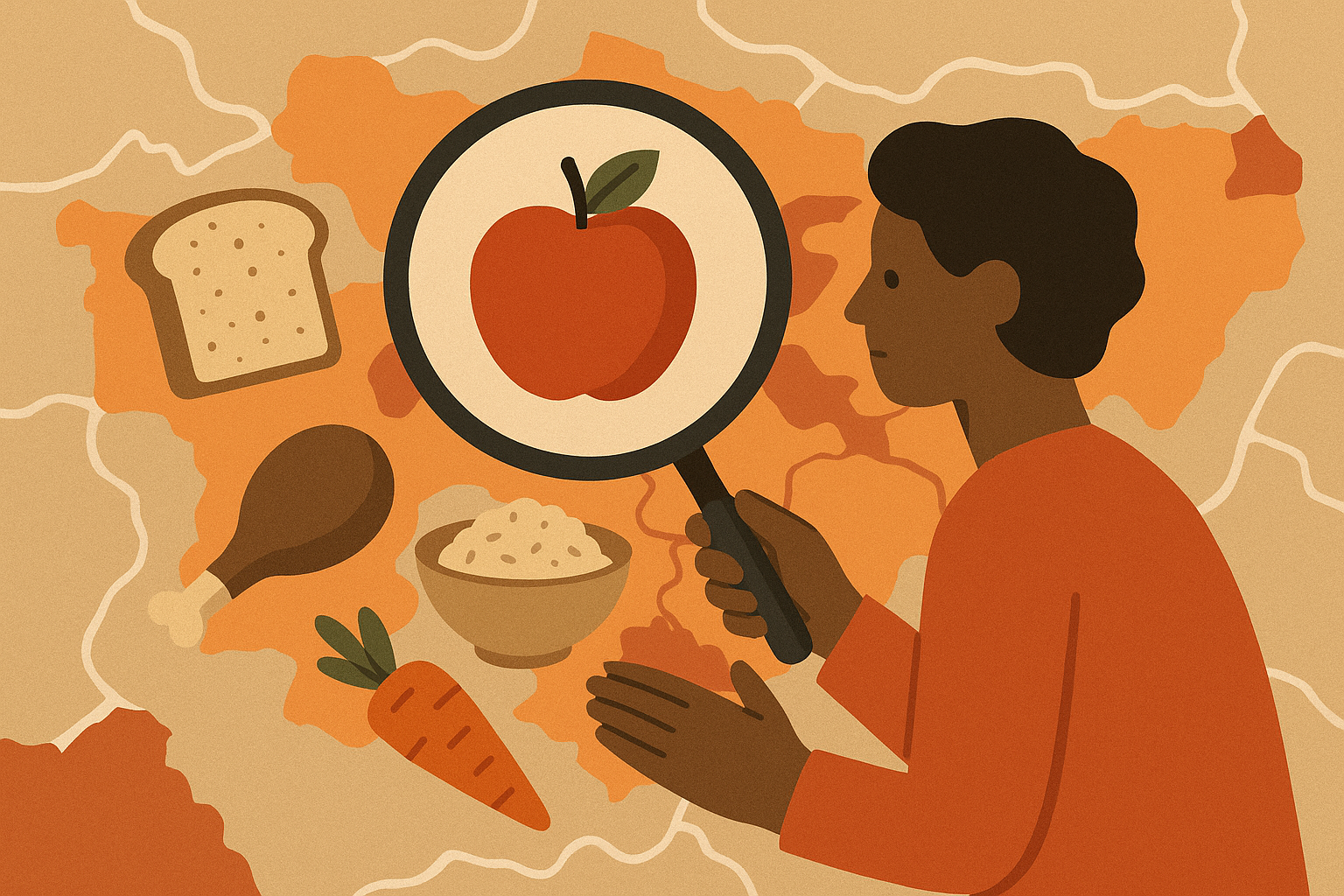
Learning Your Body’s New Language
Here’s my stupid-simple rule: If I’m thinking about food but not craving anything specific, I probably need to eat. If the thought of food makes me feel “meh,” I wait another hour.
Recognizing Whisper-Level Hunger
Traditional hunger often “roars” with urgency and obvious stomach growling, but semaglutide hunger “whispers” with subtle cues. Slight fatigue or difficulty concentrating become your new hunger signals. I used to wait for that familiar stomach-growling hunger that never came anymore.
Now I watch for more subtle signs: when my energy dips slightly, when I start feeling a bit scattered, or when food starts looking appealing again. These whispers are easy to miss if you’re waiting for the old loud hunger signals.
Simple Hunger Signal Tracking:
Physical Signs to Watch For:
- ☐ Slight fatigue
- ☐ Difficulty concentrating
- ☐ Food looks appealing again
- ☐ Mild irritability
- ☐ Thinking about food (not craving)
Rate your energy and focus on a scale of 1-10. When they drop to 6 or below, it’s probably time to eat something small.
Finding Your Personal Comfort Zone
My comfortable stopping point is around a 5 out of 10 on fullness – satisfied but not full, with room for a few more bites if I wanted them. Going to a 7 or 8 means I’ll be uncomfortable for hours. This took practice to recognize, but now it’s automatic.
| How Full You Feel | What It Actually Means | What To Do |
|---|---|---|
| 1-2 | Actually hungry (rare on this med) | Eat something now |
| 3-4 | Ready to eat | Good time to start |
| 5-6 | Satisfied and comfortable | STOP HERE |
| 7-8 | Too full, uncomfortable | Avoid this zone |
| 9-10 | Overly full, might feel sick | Emergency – call your doctor |
Real Hunger vs. Medication Effects
Sometimes my appetite disappears completely, but my body still needs nutrition. I learned to check in with my energy levels, mood, and physical symptoms rather than relying on hunger cues. If I’m tired, irritable, or having trouble concentrating, I probably need to eat even if I don’t feel hungry.
When Food Stops Being Your Emotional Crutch
The weirdest part? When you can’t eat your feelings anymore, you actually have to… feel them. Turns out I was using food to deal with a lot more than I realized. That was uncomfortable to face, but also kind of liberating.
What Food Was Really Doing for You
Without the option to eat my feelings, I had to face what those feelings actually were. Boredom, stress, loneliness
Without the option to eat my feelings, I had to face what those feelings actually were. Boredom, stress, loneliness – food had been my go-to solution for all of them. Recognizing this pattern was uncomfortable but necessary for building better coping strategies.
Healthcare experts are recognizing this challenge. As dietitian Kessel explains: “My entire world changed, and let’s be honest: it’s a lot easier to work on your relationship with food, your body, and unpack the ways you were affected by diet culture when you just aren’t hungry all the time”.

Building New Comfort Habits
I replaced my stress-eating with a 5-minute walk outside, my boredom-snacking with herbal tea and a good book, and my celebration-eating with buying myself flowers or calling a friend. These new habits had to feel genuinely satisfying, not like punishment.
The key is finding replacement behaviors that provide similar emotional satisfaction without relying on food.
Building Meals That Actually Work With Your New Appetite
This goes way beyond simple calorie counting. I learned to design meals that work with semaglutide’s effects to enhance weight loss, improve how I feel, and maintain muscle mass – all while working within the constraints of dramatically reduced appetite and slower digestion.
Sample meal plans for semaglutide users typically range from 1400-1600 calories per day and are designed to be high protein, high fiber, and low sugar and low fat. However, these generic numbers miss the bigger picture of how to structure meals for optimal results.
When planning protein, it’s important to understand the balance between protein and fiber for optimal digestive health on semaglutide.
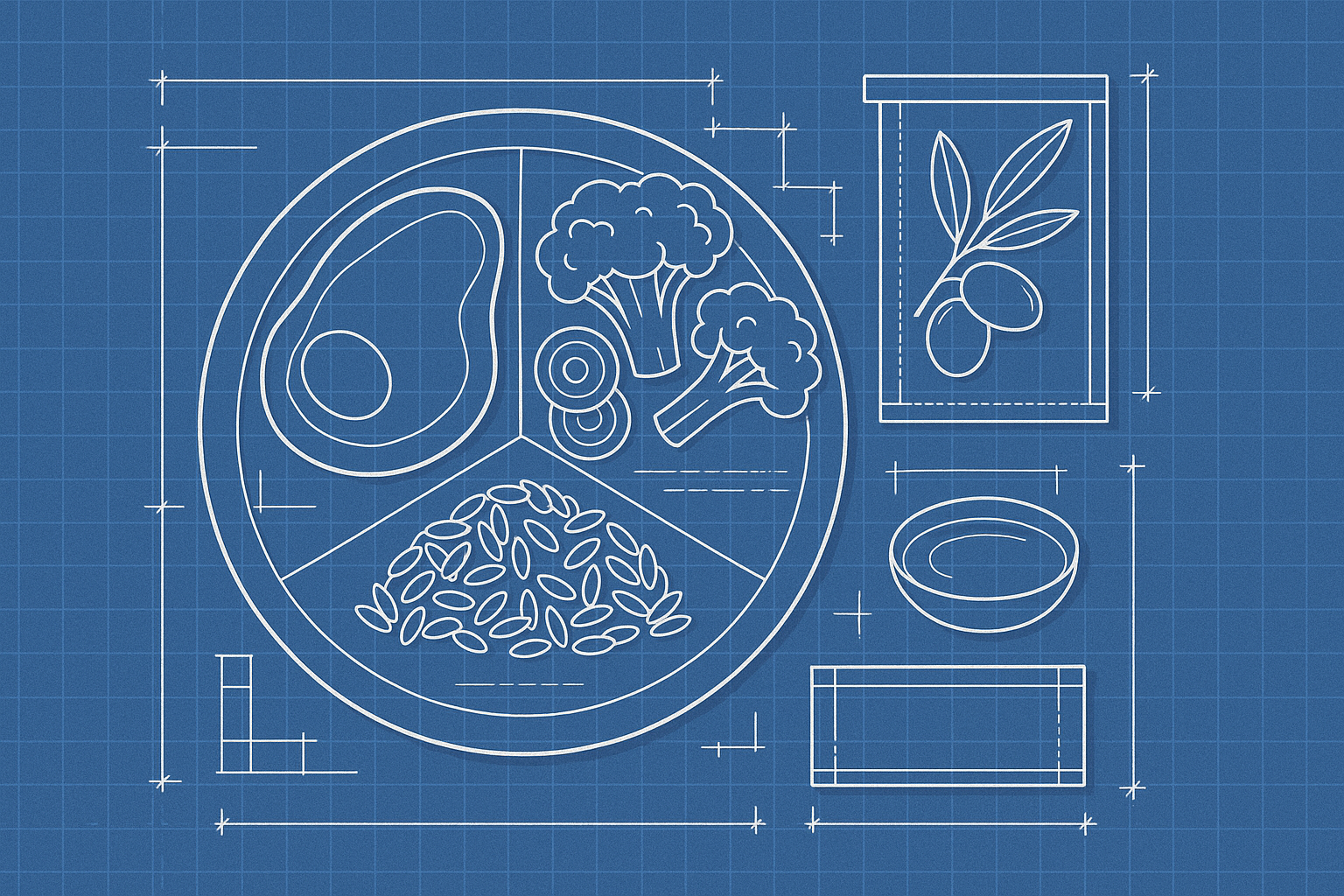
Protecting Your Muscle Mass
With reduced food volume, protein intake often becomes inadequate, leading to muscle loss that can sabotage your long-term results. I had to get strategic about protein planning to ensure adequate intake without overwhelming my reduced stomach capacity.
The Little-and-Often Approach
Instead of trying to cram 30 grams of protein into one meal (which would make me feel terrible), I spread it throughout the day. Two eggs at 10 AM, a small Greek yogurt at 1 PM, some nuts at 4 PM, and a palm-sized piece of fish at dinner. This approach keeps my muscles fed without overwhelming my system.
Daily Protein Game Plan:
- ☐ Morning (10 AM): 15-20g protein (2 eggs, Greek yogurt)
- ☐ Midday (1 PM): 10-15g protein (nuts, seeds, small portion lean meat)
- ☐ Afternoon (4 PM): 8-12g protein (protein smoothie, cottage cheese)
- ☐ Evening (7 PM): 20-25g protein (fish, chicken, tofu)
- ☐ Total daily goal: 50-70g protein spread across 4 meals
Making Protein Quality Count
Since I can’t eat huge portions anymore, every protein choice has to be strategic. I pair incomplete proteins to create complete amino acid profiles – hemp hearts in my yogurt, or a small portion of quinoa with my black bean soup. This way, smaller amounts of food deliver the same muscle-building benefits.
Semaglutide is administered subcutaneously once a week with dosage guidelines that can vary between 1.7mg per week and 2.4mg per week. Your meal planning needs to account for these dosage variations and their impact on appetite.
Working With Your Body’s Fuel Systems
Using semaglutide as a tool to improve your body’s ability to efficiently switch between burning glucose and fat creates lasting improvements that extend far beyond weight loss, setting you up for better long-term health and easier weight maintenance.
Smart Carb Timing
I eat more carbs on days when I’m active and fewer on sedentary days. On workout days, I’ll have some fruit or sweet potato during my peak eating window. On rest days, I focus more on vegetables and healthy fats. This flexibility keeps my metabolism responsive while working within my reduced appetite.
Jennifer, a marketing executive I know, follows a “carb cycling” approach. On her three weekly workout days, she includes 1/2 cup quinoa or sweet potato in her 11 AM meal. On rest days, she replaces these with extra avocado or nuts. This strategy helped her maintain energy for workouts while continuing steady weight loss over 6 months.
Healthy Fats for Hormone Support
Healthy fats became my secret weapon for feeling satisfied with smaller meals. A tablespoon of almond butter, some avocado, or olive oil drizzled on vegetables makes meals more satisfying and helps my body absorb fat-soluble vitamins A, D, E, and K.
Understanding the difference between beneficial and harmful fats is crucial, especially when choosing the right cooking oils for your meal preparation.
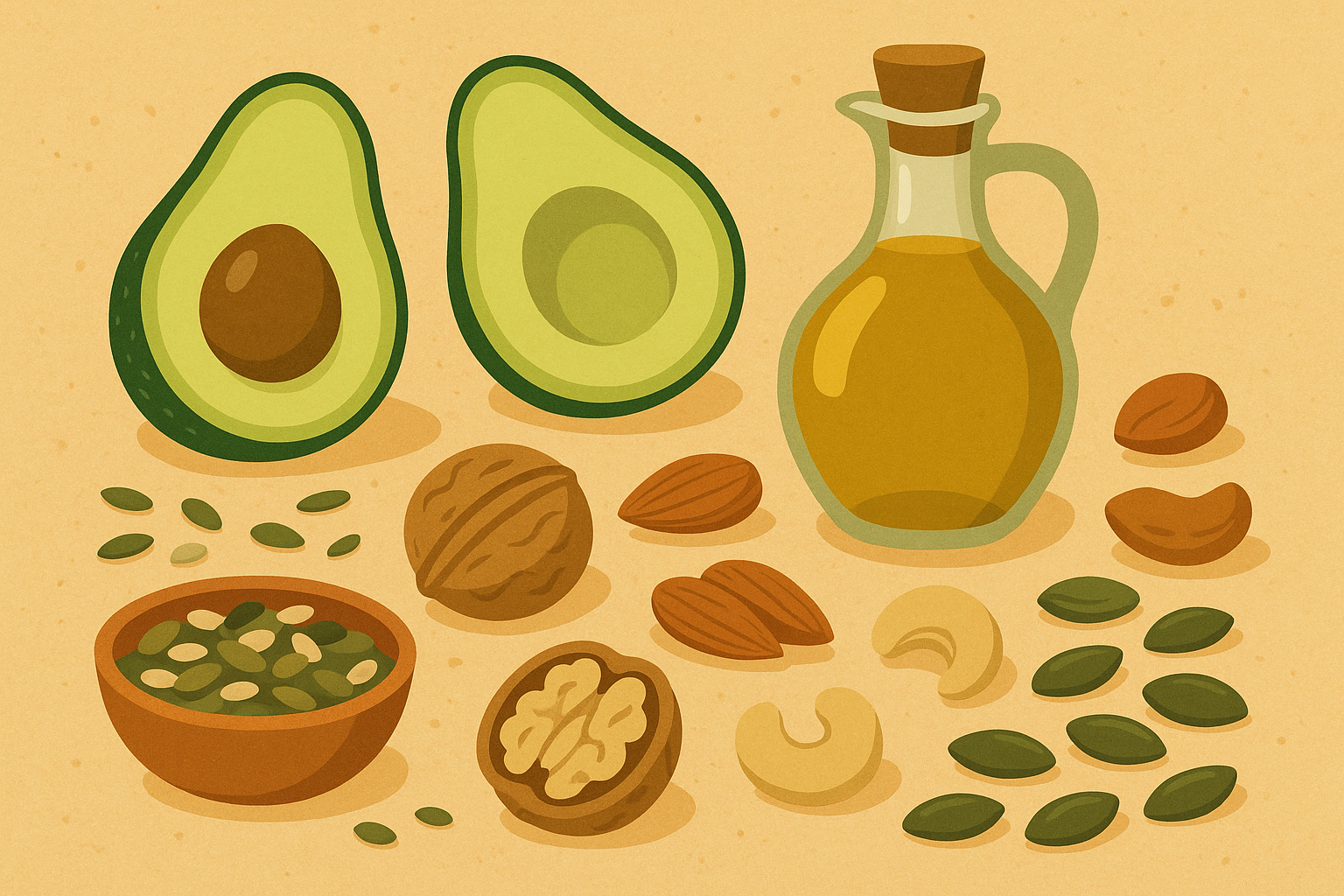
Supplements That Actually Help
Let’s be honest – you’re probably going to need some supplements. When you’re eating 60% less food, it’s really hard to get everything you need from meals alone. Most meal plans completely ignore how semaglutide affects nutrient absorption and creates predictable deficiencies that can mess with your energy, mood, and long-term success.
Preventing the Most Common Problems
The dramatic reduction in food volume creates predictable nutrient gaps that can lead to fatigue, hair loss, mood changes, and metabolic slowdown if not addressed with targeted supplementation.
B Vitamins for Energy
B vitamins become critically important as your body processes fat stores for energy during weight loss. I take my B-complex first thing in the morning, 30 minutes before I plan to eat anything. This timing ensures absorption before my digestion slows down, and I’ve noticed a significant difference in my energy levels throughout the day.
For comprehensive nutritional support, consider these three daily supplements recommended by nutritionists as a foundation for your supplementation protocol.
Electrolyte Balance
The muscle cramps and fatigue I experienced around month 3 were actually electrolyte imbalances from rapid weight loss. Adding a high-quality magnesium supplement and being more intentional about getting potassium from food made a huge difference.
Rapid weight loss combined with potential changes in how your body handles fluids requires careful attention to electrolytes. A good magnesium-potassium balance helps prevent the cramping, fatigue, and brain fog common in months 2-4 of treatment.
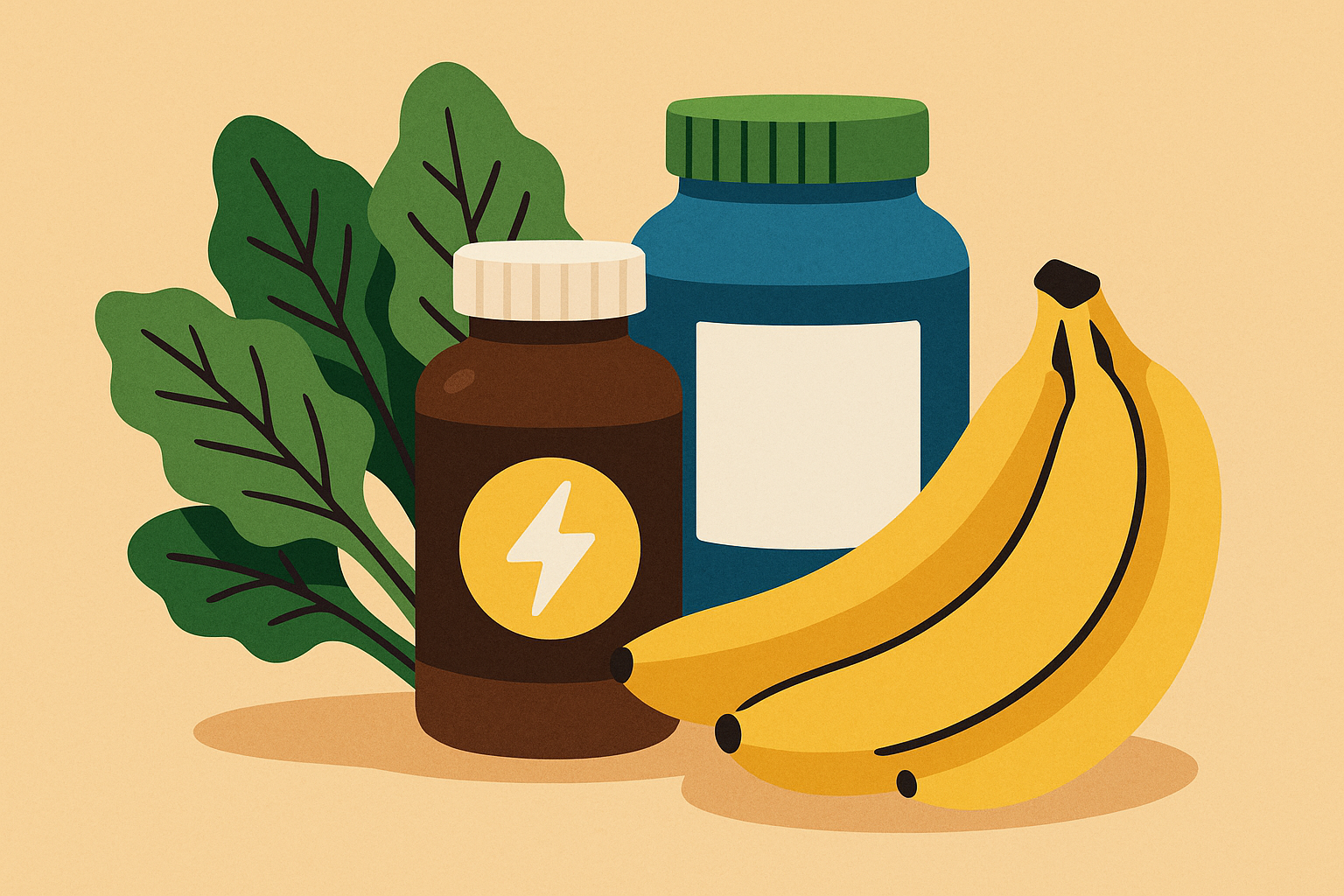
Iron Absorption
My iron levels dropped significantly until I figured out the timing. Now I take iron with vitamin C about 2 hours after my weekly injection, when my system seems most receptive to absorption.
With reduced stomach acid production and slower digestion, iron deficiency becomes common, especially in women. Pairing iron supplements with vitamin C sources during your peak absorption window maximizes uptake.
Supporting Your Slower Digestion
Your digestive system needs extra support to handle the dramatic changes semaglutide creates. The right digestive aids can mean the difference between comfortable, efficient digestion and hours of bloating and discomfort after meals.
Digestive Enzymes
Digestive enzymes were a game-changer for me. Taking them 15 minutes before eating prevents that heavy, stuck feeling I used to get after meals. Now food actually feels processed properly instead of just sitting there.
Gut Health Support
I noticed my digestion and even my mood improved when I started taking a high-quality probiotic specifically designed for people on GLP-1 medications. The research on gut health and weight management is fascinating, and supporting my microbiome has been worth the investment.
Semaglutide alters gut bacteria composition, often reducing beneficial strains that support both digestion and continued weight loss. Specific probiotic strains help maintain the digestive health crucial for long-term success.
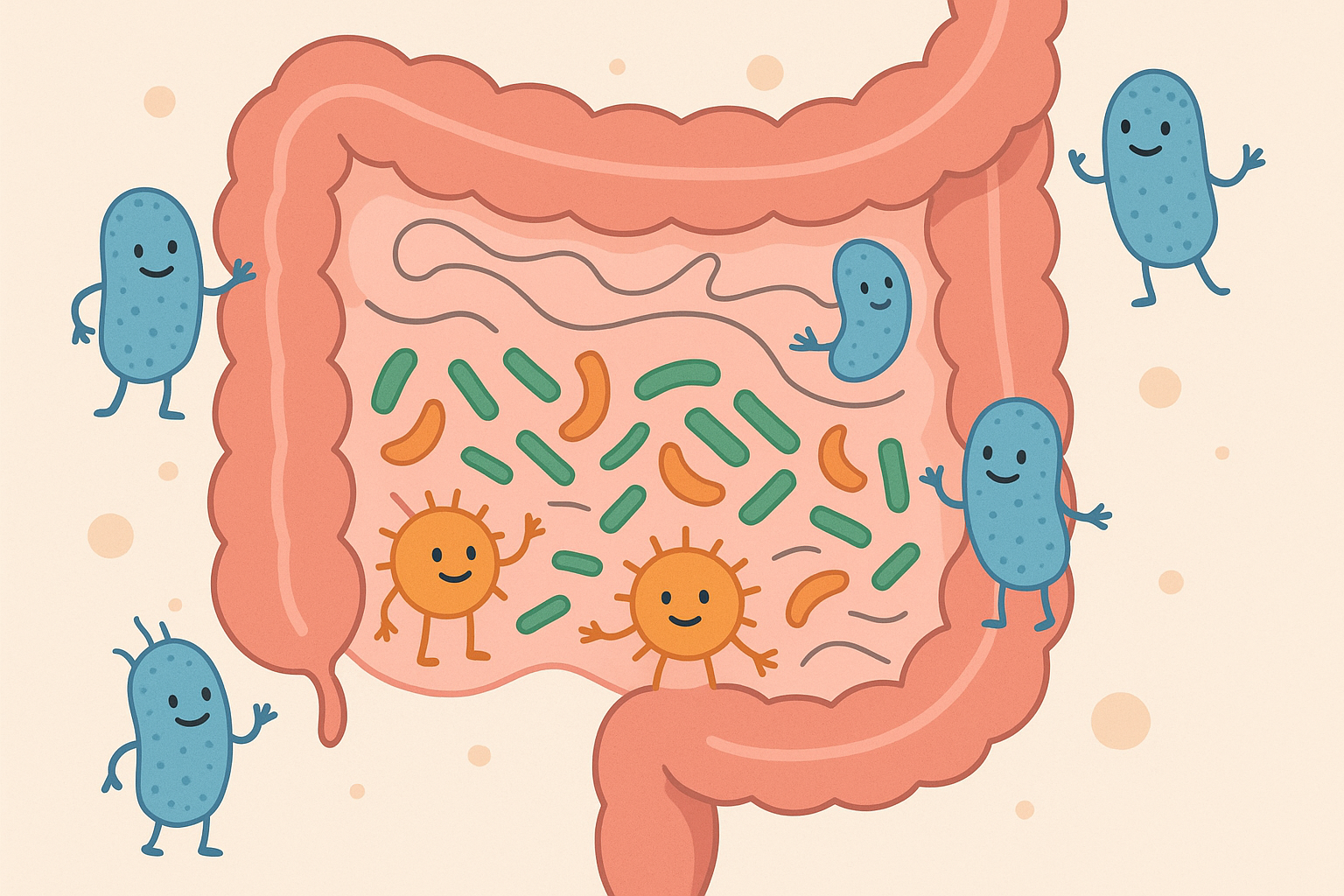
Final Thoughts
Look, this whole process is weird and sometimes frustrating. Some days you’ll nail it, other days you’ll feel like you have no idea what you’re doing. That’s normal. Give yourself permission to figure it out as you go – because that’s exactly what the rest of us are doing too.
After months of trial and error with semaglutide, I’ve realized that success isn’t about fighting against the medication’s effects – it’s about working with them intelligently. Your reduced appetite isn’t a limitation to overcome; it’s an opportunity to completely reset your relationship with food and nutrition.
The biggest mistake I see people make is trying to force their old eating patterns onto their new physiology. Your body is literally operating differently now, and that requires a completely different approach to meal planning, timing, and supplementation. When you align your eating with your medication’s natural rhythms instead of fighting against them, everything becomes easier – the weight loss, the energy levels, even the social aspects of eating.
What surprised me most was how this approach improved areas of my health I wasn’t even targeting. My sleep got better, my mood stabilized, and my energy became more consistent throughout the day. These weren’t side effects of weight loss – they were the result of finally giving my body what it needed, when it needed it, in the amounts it could actually handle.
If you’re struggling with fatigue, digestive issues, or feeling inadequately nourished on semaglutide, the strategies in this guide can help you optimize your experience. Remember, this medication is a tool, and tools work best when you understand how to use them properly.
This isn’t going to be perfect from day one. I spent weeks figuring out what worked, had plenty of days where I felt awful, and made mistakes. But once you start working WITH the medication instead of against it, everything gets so much easier.

